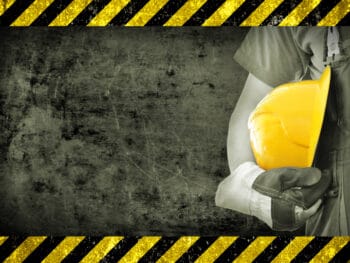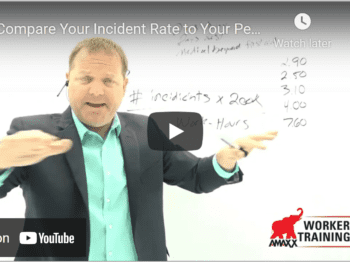
Slips, trip and fall injuries, and overexertion are responsible for the bulk of claims. Depending on the tasks performed on your work floor, this could be the bulk of a worker’s day from the start of the workweek to the end.
Minor Changes Can Significantly Increase Safety
Preventing the most common injuries can be as simple as maintaining good housekeeping practices, and a few minor changes can significantly increase safety in the workplace and lower workers’ comp costs.
Click Link to Access Free PDF Download
“4-Step Sequence For Effective Employee Screening, Hiring, & Placement”
6 Tips to Reduce Common Injuries
For example, If you live in the Midwest or Northeast, many injuries each year are due to employees slipping on ice and snow. In addition to that, no matter where you reside, employees can slip on water or grease spills, and also trip over objects, resulting in minor to severe injury. Here are ways to reduce these risks:
- Fix poor lighting in areas where injuries occur the most.
- Keep floors and stairs clean and free of objects or debris.
- Clean slippery surfaces regularly and make sure machinery is marked off so workers do not get clothing or laces caught up in moving objects.
- Covers hoses and cords or run them out of the path of passing employs in walking areas or work benches.
- Keep aisles clutter free and make sure any spills are promptly cleaned and a product such as Floor-Dry is used to soak up any remaining oils or liquid after a spill.
- Repair uneven surfaces or cracks in your work floor to eliminate tripping or stumbling.
Overexertion Injuries
Overexertion injuries occur mainly due to lifting, pushing and pulling, bending and twisting, repetitive motion, and awkward postures. Out of those risks, lifting and pushing/pulling tasks will be the cause for the majority of injuries.
To move materials, think about utilizing:
- Conveyers
- Hoists
- Lift-assist devices and equipment designed to reduce material handling and manual lifting.
- Reduce the weight of the materials to be moved or break down pallets into smaller, more manageable loads that are easier on your employees.
Teach Employees Proper Lifting Techniques
Another effective alternative is to invest in teaching employees proper lifting techniques, such as “lifting with the legs and not the back,” or “bending the tool and not the wrist.” These may seem like no-brainers, but these mottos need to constantly be ingrained in the minds of each employee you have working for you on your work floor. It really can go a long way in preventing injury.
Even something as simple as implementing a lift-limit, meaning that if material is over a certain weight, a worker has to go get another employee to help. Install some discipline if a coworker is caught breaking the lifting rules. Even better is implementing a reward system, when another employee is observed helping another employee out. A $10 gas card mean seem like nothing these days, but everyone loves getting some help at the gas pump, even if it is only $10.
Other common-sense solutions include using handles to lift boxes when they are so equipped, reducing the frequency and distance of lifting and carrying, locating frequently used items as close to the body as possible to minimize reaching, and adding padding to tools that may need it. These are simple ways that can reduce claims in the long run, and they are simple corrections to longstanding mechanisms of injury.
Summary
These are common sense ways to help reduce risk and injury in the workplace. Workers face these risks every day, and you could be surprised at what suggestions your coworkers can supply if you ask them. Reward ideas that you implement, and welcome feedback at any time, not just at the end of the year when you ask your employee. Sometimes the simplest, most cost-effective answers are right under your nose.
 Author Michael Stack, CEO Amaxx LLC. He is an expert in workers’ compensation cost containment systems and helps employers reduce their workers’ comp costs by 20% to 50%. He works as a consultant to large and mid-market clients, is a co-author of Your Ultimate Guide To Mastering Workers Comp Costs, a comprehensive step-by-step manual of cost containment strategies based on hands-on field experience, and is the founder & lead trainer of Amaxx Workers’ Comp Training Center, which offers the Certified Master of Workers’ Compensation national designation.
Author Michael Stack, CEO Amaxx LLC. He is an expert in workers’ compensation cost containment systems and helps employers reduce their workers’ comp costs by 20% to 50%. He works as a consultant to large and mid-market clients, is a co-author of Your Ultimate Guide To Mastering Workers Comp Costs, a comprehensive step-by-step manual of cost containment strategies based on hands-on field experience, and is the founder & lead trainer of Amaxx Workers’ Comp Training Center, which offers the Certified Master of Workers’ Compensation national designation.
Contact: mstack@reduceyourworkerscomp.com.
Workers’ Comp Roundup Blog: http://blog.reduceyourworkerscomp.com/
©2022 Amaxx LLC. All rights reserved under International Copyright Law.
Do not use this information without independent verification. All state laws vary. You should consult with your insurance broker, attorney, or qualified professional.

















